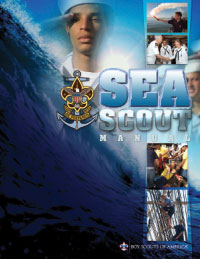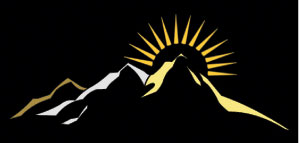
Hands and Hearts
In October, the American Heart Association issued new guidelines for CPR and ECC (emergency cardiovascular care), calling for a change in the CPR sequence from A-B-C (airway, breathing, chest compressions) to C-A-B (chest compressions, airway, breathing) for adults, children, and infants.
 |
The letters sound simple enough, but according to the AHA, the new model “will require re-education of everyone who has ever learned CPR.” And, of course, that includes Scouters and youths.
Richard Bourlon, head of the BSA’s Health and Safety team, notes that many Scouters will begin learning the new methods as they take training programs through organizations like the American Red Cross. But he cautions that even with the new guidelines, Scout leaders and Scouts still need to use good judgment depending on the person in trouble and the circumstances.
“Many people are asking, ‘Does that mean I don’t have to do rescue breaths anymore?’” says Bourlon. “But [the new CPR sequence] isn’t one size fits all.” He adds that 325,000 people a year die of sudden cardiac arrest, but only a small percentage of those are youth. “Compression-only may be great for a Scouter who collapses at your meeting, but what about a Scout who rescues a drowning victim? They need air. With our youth and with our Scouting family, we have both exposures.”
For more on the new CPR guidelines, go to heart.org.
Pinewood Derby App? Yep!
When it comes to pinewood derbies, there’s an app for that, just like for about everything else these days.
 AppCore LLC, an official licensee of the Boy Scouts of America, has created the Pinewood Derby game for the iPad and iPhone.
AppCore LLC, an official licensee of the Boy Scouts of America, has created the Pinewood Derby game for the iPad and iPhone.
The app, which debuted in December, allows Scouters to help Cub and Webelos Scouts test their car-building skills just as they would in real life. Boys can learn basic physics by customizing their cars with a variety of wheel dimensions, weight distribution options, axle types, wheel types, and body styles. Quick-race and tournament-play modes give them feedback on what makes a car go fast. And the more a driver wins, the more features he can unlock.
Find the new app by searching for “pinewood derby” at the App Store on your iOS device.
 Fam Trip
Fam Trip
Looking for a summer experience that will engage and delight every member of the family? The Philmont Training Center is just the place.
While volunteers and professional Scouters tune up the latest leadership techniques, family members of any age will enjoy exciting educational programs during the training session.
Fees include conference and program materials, meals, and lodging. Conference participant, $470; spouses, $340; children ages 14-20, $285; ages 6-13, $225; ages 5 and under, $180; Mountain Trek, $345; NAYLE, $355.
See the schedule and get more info at philmontscoutranch.org/ptc; send questions to trainingcenter@philmontscoutranch.org.
 Power From the People
Power From the People
Renewable energy is all the rage—and now, environmentally conscious Scouters and youths can harness their own energy thanks to the nPower PEG (Personal Energy Generator). The device springs from an idea that Aaron LeMieux, founder of Tremont Electric, an alternative energy company, has been working on for several years.
Hiking the Appalachian Trail back in the ’90s, LeMieux wished he had a way to recharge his radio and CD player without carrying the extra weight of disposable batteries. “Several days into that three-month trip, I was inspired by the notion that my backpack possessed a significant amount of kinetic energy through the up-and-down movement derived from walking,” LeMieux recalls.
 The nPower PEG couldn’t be simpler to use. Just put it in your backpack and go. While you hike, jog, or bike, the nPower PEG builds up its power reserve. When it’s ready, connect the nPower PEG via USB cable to any mobile phone, MP3 player, or GPS device. (Alas, no laptops.) Users will cut down on environmental waste by eliminating the need for multiple charges and batteries.
The nPower PEG couldn’t be simpler to use. Just put it in your backpack and go. While you hike, jog, or bike, the nPower PEG builds up its power reserve. When it’s ready, connect the nPower PEG via USB cable to any mobile phone, MP3 player, or GPS device. (Alas, no laptops.) Users will cut down on environmental waste by eliminating the need for multiple charges and batteries.
LeMieux believes that nPower eventually will spread to many other products such as medical devices, toys, and more. In the meantime, the nPower PEG makes going green even easier. Price: $149 at npowerpeg.com.
Help Wanted
Attention, Scouts and leaders 18 or older: Super summer jobs await you at the BSA’s three high-adventure bases. Here’s how to apply:
Florida National High Adventure Sea Base
Summer hires: 150
Pay: $900 per month and up—more for specialty positions. Includes room and board.
Positions: program, retail, and food-service staff. Specialized positions such as scuba instructors and boat captains require prior certification.
Contact: P. O. Box 1906, Islamorada, FL 33036; 305-664-5612,bsaseabase.org.
Northern Tier National High Adventure Bases
Summer hires: 200
Pay: varies by position; first–year staffers generally make $936.79 a month, plus room and board.
Positions: canoe-trip leaders and outfitting staff.
Contact: P. O. Box 509, Ely, MN 55731-0509; 218-365-4811,info@ntier.org.
Philmont Scout Ranch
Summer hires: 1,000
Pay: $950 a month, plus room and board.
Positions: trek rangers, backcountry interpreters, and craft counselors.
Contact: 17 Deer Run Road, Cimarron, NM 87714; 575-376-2281,philstaff@philmontscoutranch.org.
Open-water Winter
Leaders interested in Scuba certification for their youths have a new way to achieve their goals and maybe save some money in the bargain. The Florida National High Adventure Sea Base now offers “referral certification” to Scout troops and Venturing crews each spring.
 That means divers can do their classroom work and confined-water work back home with an instructor who belongs to the Professional Association of Diving Instructors. The divers then come to Florida to complete their certification with the required open-water dives, after which they can enjoy several days of diving in the Florida Keys. It’s an option that might be especially attractive to those living in northern climes.
That means divers can do their classroom work and confined-water work back home with an instructor who belongs to the Professional Association of Diving Instructors. The divers then come to Florida to complete their certification with the required open-water dives, after which they can enjoy several days of diving in the Florida Keys. It’s an option that might be especially attractive to those living in northern climes.
“Do all the inside pool and classroom work back home where it’s cold,” says Paul Beal, general manager at the Florida Sea Base. “Then spend the rest of your adventure diving America’s only living coral reef.”
To reserve a spot, go to bsaseabase.org.
 Cold Camping
Cold Camping
Neither snow, nor rain … O.K., that’s the Postal Service, but the same all-weather camping ethic always has been part of Scouting.
Starting in the mid-1970s, the three northern high-adventure bases—Charles L. Sommers Wilderness Canoe Base (Minnesota), Northern Wisconsin National Canoe Base, and Maine National High Adventure Base—ran winter treks. The name and symbol for the programs was Okpik (ook’ pick), the Inuit word for the Snowy Owl.
The programs in Wisconsin and Maine were discontinued in 1984 and 1991, respectively, but Scouts still get their freeze on. Currently, Northern Tier (formed when the Sommers and Northern Wisconsin bases merged) offers seven different winter-camping programs. These include dog sledding, cross-country skiing, snowshoeing, and animal tracking.
 Attention, Sea Scouts
Attention, Sea Scouts
The new version of the Sea Scout Manual (Supply No. 33239), available at your local Scout shop, through the National Distribution Center, and at scoutstuff.org, posts new requirements for the four rank advancements for Sea Scouts—Apprentice, Ordinary, Able, and Quartermaster. There’s also a DVD with video footage showing how to tie all the Sea Scout knots, how to set up a land ship, and more. Watch for other changes at seascout.org.
Also, get ready for the 100th Anniversary of the Sea Scouts in 2012. If you have ideas for making this a super celebration, send them to: 100th Anniversary Celebration of Sea Scouts, National Council, Boy Scouts of America, SUM 250, 1325 W. Walnut Hill Ln., Irving, TX, 75038.
The Story Of a River
 We take many of nature’s miracles for granted, and that certainly includes the mighty Colorado River. More than 30 million people in the arid West rely on the Colorado for irrigation, drinking water, and electricity. But the future of the river is anything but certain.
We take many of nature’s miracles for granted, and that certainly includes the mighty Colorado River. More than 30 million people in the arid West rely on the Colorado for irrigation, drinking water, and electricity. But the future of the river is anything but certain.
That’s the view of photographer Peter McBride and author Jonathan Waterman, who teamed up to create The Colorado River: Flowing Through Conflict (Westcliffe Publishers, $27.95). The book follows the Colorado, “one of the most diverted, silted, and heavily litigated rivers in the world,” from its headwaters in the Colorado Rockies through its 1,450-mile journey. Waterman paddled the entire length of the river, sometimes joined by McBride, and much of the striking photography was taken from the air.
“The aerial perspective shows where we as humans have been, how we connect to the earth, and how nature relates to itself,” says McBride.
The result is a book that both celebrates natural beauty and raises questions about man’s stewardship of this vital wonder.
Summit Support
As 2010 wound down, more donations poured in for The Summit Bechtel Family National Scout Reserve, bringing total contributions for the project to more than $100 million in less than one year.
A $25 million gift from the Suzanne and Walter Scott Foundation, coupled with large gifts from Mike and Gillian Goodrich and several anonymous donors, have brought the BSA’s vision of a world-class Scouting center closer to reality.
“The love and respect for the outdoors and our natural environment that Scouting instilled in me continues to this day,” says Walter Scott, a Distinguished Eagle Scout and the former CEO of Peter Kiewit Sons’ Inc. “But my childhood troop in Omaha could never have imagined anything like what The Summit will be. It’s simply spectacular.”
Located in the Glen Jean–Mount Hope area of West Virginia, The Summit will be the permanent site for the BSA’s national Scout jamboree and a new national high-adventure base. The first jamboree in West Virginia will take place July 15–24, 2013.
Take the journey
Effective Jan. 1, Scouting instituted a new recognition program, Journey to Excellence, which replaces the Centennial Quality Awards program.
 Chuck Keathley, with Mission Impact in the BSA national office, says that Journey to Excellence uses a balanced approach and key performance indicators to measure outcomes vs. process, with increased emphasis on quality programming.
Chuck Keathley, with Mission Impact in the BSA national office, says that Journey to Excellence uses a balanced approach and key performance indicators to measure outcomes vs. process, with increased emphasis on quality programming.
“We’ve always measured growth, but this also looks at what kind of experience the boys are having,” he says. “Are they camping, are they advancing, are we retaining them and increasing our market share?”
Many leaders already have taken advantage of numerous webinars explaining the new criteria. Keathley says the webinars will be repeated beginning in January and are available at myscouting.org.